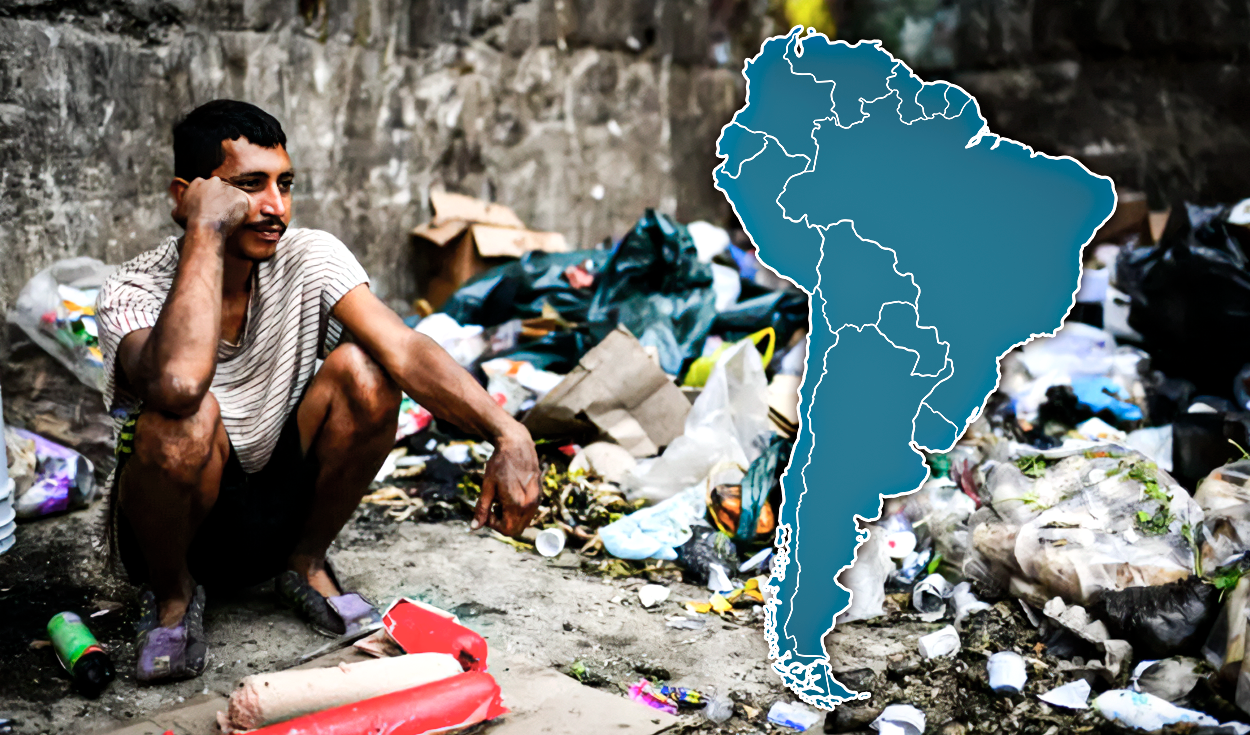
Although there is sufficient wealth and resources in the world to guarantee a decent standard of living for all humanity, there are countries such as Burundi, South Sudan and the Congo that continue to face conditions of poverty extreme. Identifying a single cause for long-term poverty is complex. For example, corrupt governments can transform a rich nation into an impoverished one.
The same can happen due to a history of exploitative colonization, a weak rule of law, wars and social unrest, severe weather conditions or nations hostile neighbors. Weaknesses accumulate: an indebted country will not be able to invest in quality education, just as a poorly educated workforce will limit the capacity for development.
The poorest country in South America
Although GDP per capita is frequently used as a standard indicator, adjusting for differences in costs of living and inflation rates using purchasing power parity (PPP) allows for a better assessment of an individual’s purchasing power in any country. This was done by Global Finance, a financial magazine that ranked the most poor in the world based on IMF data.
In first place is South Sudan; in the second, Burundi; and in the third, the Central African Republic. The South American nations are lower in the ranking and Venezuela is the first to appear. With a GDP-PPP per capita of US$7,985, the country governed by Nicolás Maduro is ranked 61st worldwide and first in South America.
List of poorest countries in South America
The Global Finance ranking covers the 100 most poor of the world and there are 6 nations south american that appear on the list.
- Venezuela (61st place worldwide)
- Bolivia (67th place worldwide)
- Ecuador (80th place worldwide)
- Paraguay (88th place worldwide)
- Peru (91st place worldwide)
- Suriname (97th place worldwide).
What are the poorest countries on each continent of the world?
Africa
South Sudan is a young nation that faces significant obstacles in terms of development. Its economy is largely dependent on oil production, which provides most of its income and economic activity. However, political instability, ongoing conflict, and lack of infrastructure severely hamper its growth and development, leading to widespread poverty among its population. The challenges are compounded by social problems, such as limited access to education and healthcare.
Asia
Nepal, a mountainous nation, located in the heart of the Himalayas, faces significant structural challenges that impede its progress and economic growth. The Nepalese economy relies heavily on agriculture, which is vulnerable to climatic variations and a lack of modern technology.
Furthermore, although tourism represents an important source of income, especially due to its rich cultural heritage and stunning landscapes, poor infrastructure and occasional political instability limit its potential. These factors, combined with insufficient access to quality education and efficient health services, place Nepal as the most impoverished country in Asia.
Oceania
In Papua New Guinea, 37% of the population lives below the international poverty line. This extreme situation directly impacts access to basic needs, particularly for children, who face serious difficulties in accessing drinking water and adequate nutrition. It is estimated that 28% of the country’s child population presents moderate and severe levels of malnutrition, while 43% experience delays in their growth.
Poverty not only affects the health of children in Papua New Guinea, but is also a direct cause of serious social problems, such as out-of-schooling, vulnerability to labor exploitation and child trafficking.
Europe
Since Russia’s invasion of Ukraine in late February 2022, this Eastern European country has faced continued adversity and challenges. The severe effects of the war have significantly impacted Ukraine’s poverty, with an estimated 23,000 civilian casualties in the first 6 months of the intense conflict. Additionally, the conflict has destroyed vital infrastructure and social services such as schools and hospitals, leading to shortages of food, water and essential medical supplies.
This situation has exacerbated the living conditions of the population. The destruction of critical infrastructure not only complicates the delivery of humanitarian aid, but also hinders the nation’s long-term recovery. The urgency of restoring these services is crucial to mitigate the humanitarian impact of the war and to begin the process of reconstruction and normalization in the affected areas.
Source: Larepublica
Alia is a professional author and journalist, working at 247 news agency. She writes on various topics from economy news to general interest pieces, providing readers with relevant and informative content. With years of experience, she brings a unique perspective and in-depth analysis to her work.












